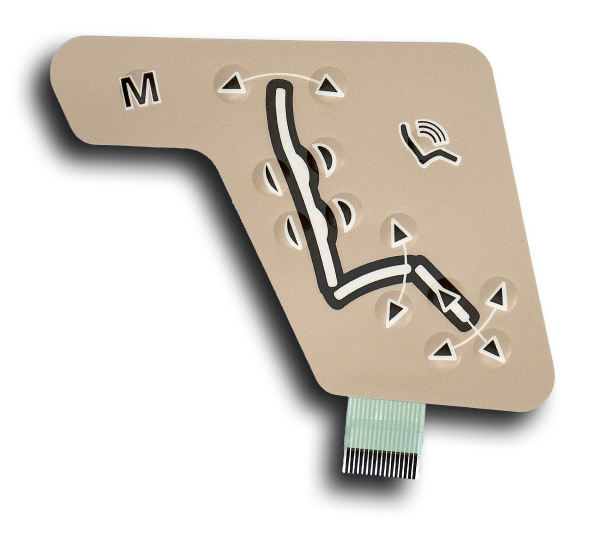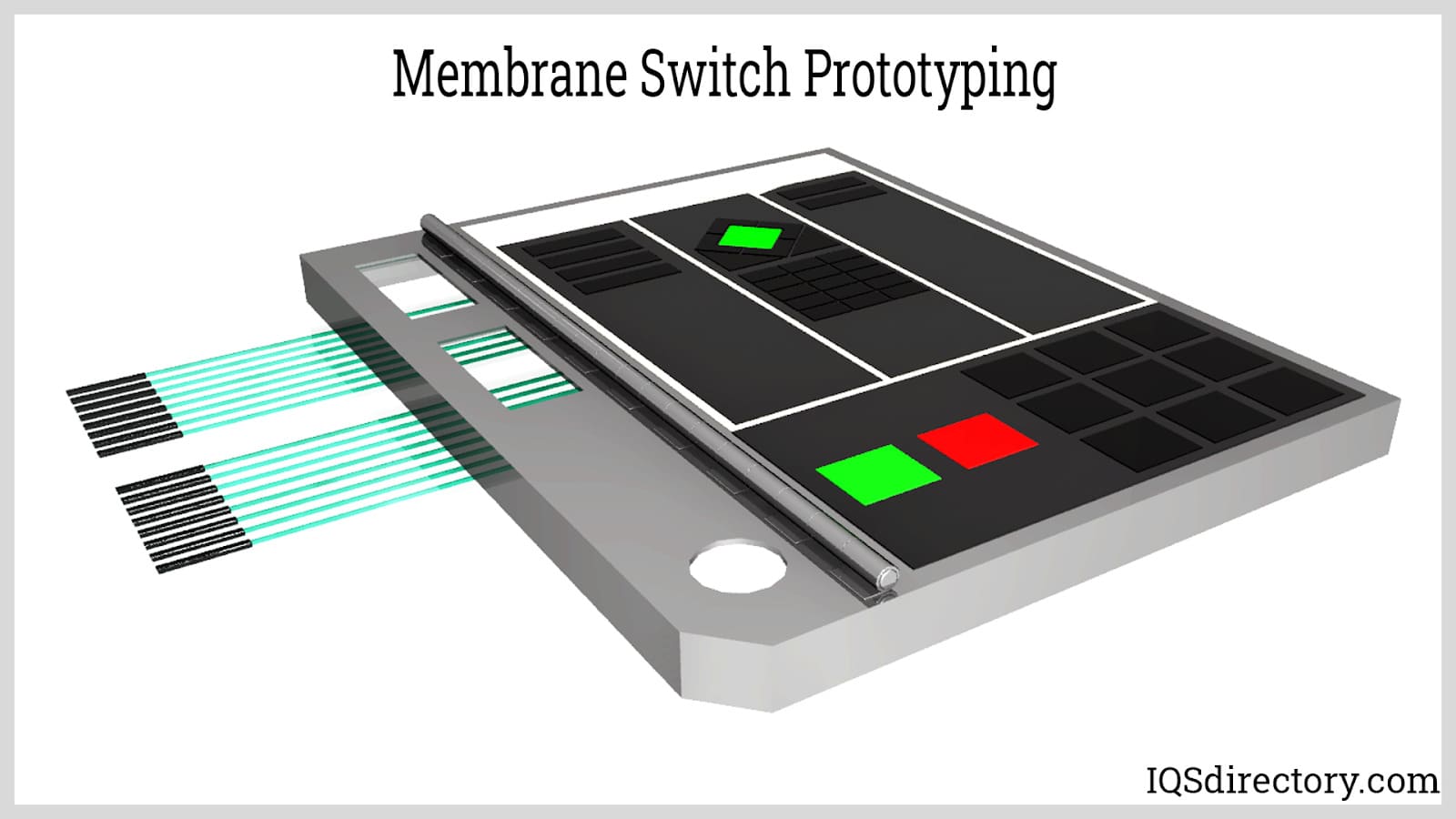Discover the Flexibility and Toughness of Membrane Switches in Modern Electronics
Discover the Flexibility and Toughness of Membrane Switches in Modern Electronics
Blog Article
The Ultimate Source on Membrane Layer Switches: Layout, Functionality, and Applications
Membrane layer switches work as an interesting junction of layout and capability, playing a crucial duty in modern individual interfaces throughout different sectors. This resource unpacks the essential elements that add to their effectiveness, consisting of visuals overlays and circuit traces, while also illuminating the mechanisms behind their stress activation. As we explore the diverse applications of membrane layer buttons, it comes to be evident that their flexibility and durability are vital in settings varying from medical care to consumer electronic devices. The subtleties of their design and operational principles may disclose even deeper insights worth considering.

Understanding Membrane Buttons
Membrane layer buttons are a sort of customer interface technology widely made use of in numerous digital gadgets, identified by their thin, versatile layout and performance. These buttons consist of multiple layers that consist of visuals overlays, glue layers, and circuitry, allowing a portable and efficient user interface for users. They can be discovered in appliances, medical tools, and commercial control board, giving a reliable method for user interaction.
One of the primary benefits of membrane buttons is their ability to withstand pollutants such as dust and dampness, making them ideal for environments where resilience is vital. Their low-profile layout enables smooth integration into various applications, while the adjustable graphic overlays boost user experience by giving clear visual responses. In addition, membrane layer switches can accommodate a range of technologies, such as tactile responses and backlighting, additional enhancing their usability.
The manufacturing procedure for membrane layer switches over normally entails screen printing, die-cutting, and lamination strategies, guaranteeing precision and consistency in manufacturing. On the whole, membrane layer switches over stand for a reliable and functional remedy for contemporary electronic devices, integrating capability with aesthetic allure in interface layout.
Key Elements and Style Components
A selection of crucial parts and layout aspects collaborated to produce a reliable membrane switch. At the core, the visuals overlay offers both useful and visual objectives, providing an user-friendly user interface while securing interior components from environmental variables. The option of materials, typically polyester or polycarbonate, influences toughness and tactile comments.
Beneath the overlay, the glue layer makes sure the switch sticks safely to the substratum, which can be glass, plastic, or steel. The spacer layer is essential, as it maintains the needed gap between the overlay and the circuit layers, allowing for efficient actuation. Membrane Switches. Circuit traces, typically made from conductive ink or adhesive, are printed on a versatile substratum, enabling electric signals to be transmitted when pressure is used
Layout considerations likewise include the setup of responsive domes or embossing that provide physical comments to the individual, boosting the overall experience. In addition, the format and spacing of the switches have to be optimized for convenience of usage, making sure that customers can navigate the interface without effort. On the whole, these parts and design elements function synergistically to create a reputable, functional membrane button navigate to this site customized to certain applications.
Performance and Operation System
At the heart of effective functionality for membrane switches lies their operational system, which helps with customer interaction via a simple yet effective layout. These buttons operate on the principle of stress activation, where a user uses force to an assigned area of the button (Membrane Switches). This activity presses the layers of the button, finishing an electric circuit that sends a signal to the linked gadget
The building usually consists of a leading graphic layer, a sticky spacer layer, and a bottom circuit layer, which jointly create a robust user interface. When pressure is applied, the top layer breaks down against the bottom circuit layer, enabling conductive traces to attach. This layout not just makes it possible for clear responsive comments but additionally guarantees durability and dependability, as the switches are commonly immune to dirt and dampness.
Furthermore, the convenience of membrane layer changes enables for integration with numerous modern technologies, consisting of LED signs and microcontrollers, enhancing their performance. By supplying a structured interface that lessens mechanical wear, membrane layer switches over continue to be a preferred selection in applications varying from customer electronic devices to industrial equipment, ensuring ideal performance and customer fulfillment throughout diverse settings.
Kinds Of Membrane Switches

Another considerable group is illuminated membrane layer buttons, which incorporate backlighting to boost presence in low-light conditions. These switches are usually made use of in control panels and dashboards where clear visibility is necessary.
Furthermore, there are custom membrane layer changes developed to satisfy particular dimensional, graphical, and functional needs. These modifications can include special forms, shades, and designs, enabling for smooth integration into different gadgets.

Applications Across Different Industries
Exactly how do membrane layer buttons i loved this improve performance across diverse markets? These flexible elements are important to many applications, providing streamlined interface and durable efficiency. In the clinical industry, membrane switches play a critical function in devices such as analysis tools and person tracking systems, where reliability and ease of cleaning are paramount. Their ability to withstand extreme atmospheres makes them perfect for lab tools and medical gadgets.
In the vehicle industry, membrane buttons are generally used in dashboards and control panels, offering intuitive controls that improve driver safety and security and comfort. The customer electronic devices industry likewise gains from their lightweight and adjustable functions, making it possible for streamlined layouts for mobile phones and home devices.
Additionally, membrane switches locate applications in industrial automation, where they contribute to efficient equipment procedure and surveillance systems. Their resistance to dirt and dampness ensures performance in requiring problems (Membrane Switches). Additionally, the food and drink market uses membrane buttons for devices control, where health and toughness are critical
Verdict
In verdict, membrane switches over stand for an important innovation in customer interface innovation, defined by their unique design and capability. The flexibility of membrane layer switches facilitates their application across varied markets, from medical gadgets to consumer electronic devices.
Membrane layer changes offer as an interesting junction of layout and capability, playing a crucial duty in modern user interfaces throughout numerous sectors.Membrane buttons are a kind of customer interface technology extensively utilized in numerous electronic devices, identified by their thin, flexible layout and performance.At the heart of efficient performance for membrane changes lies their operational system, which helps with customer interaction through a simple yet reliable design. These switches run on the principle of pressure activation, where a user applies force to a marked area of the switch.In verdict, membrane switches over represent an essential advancement in customer interface modern technology, identified by their one-of-a-kind design and capability.
Report this page